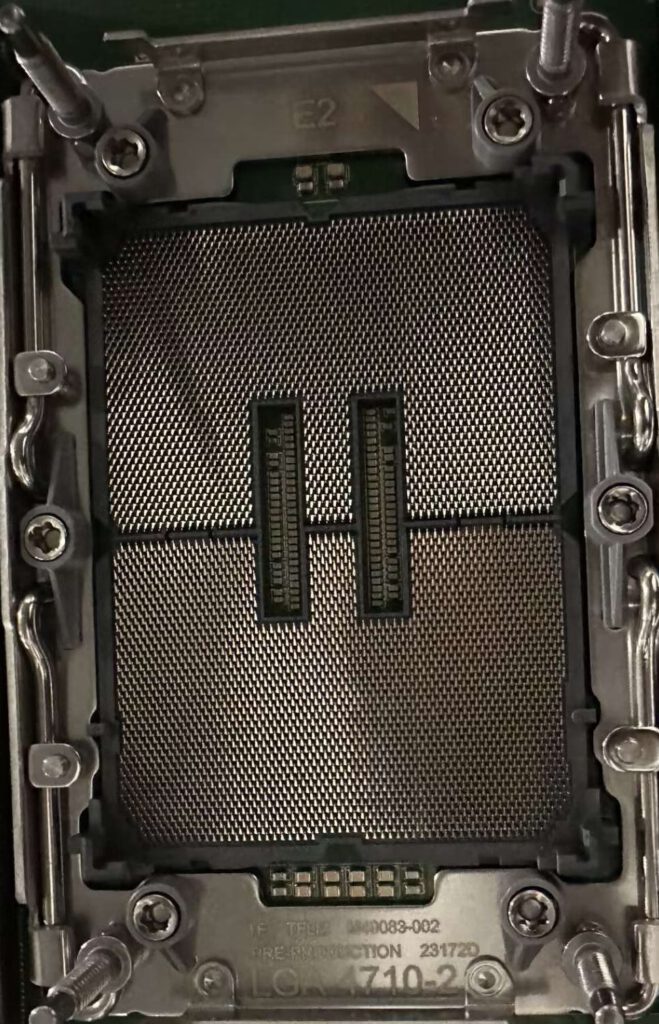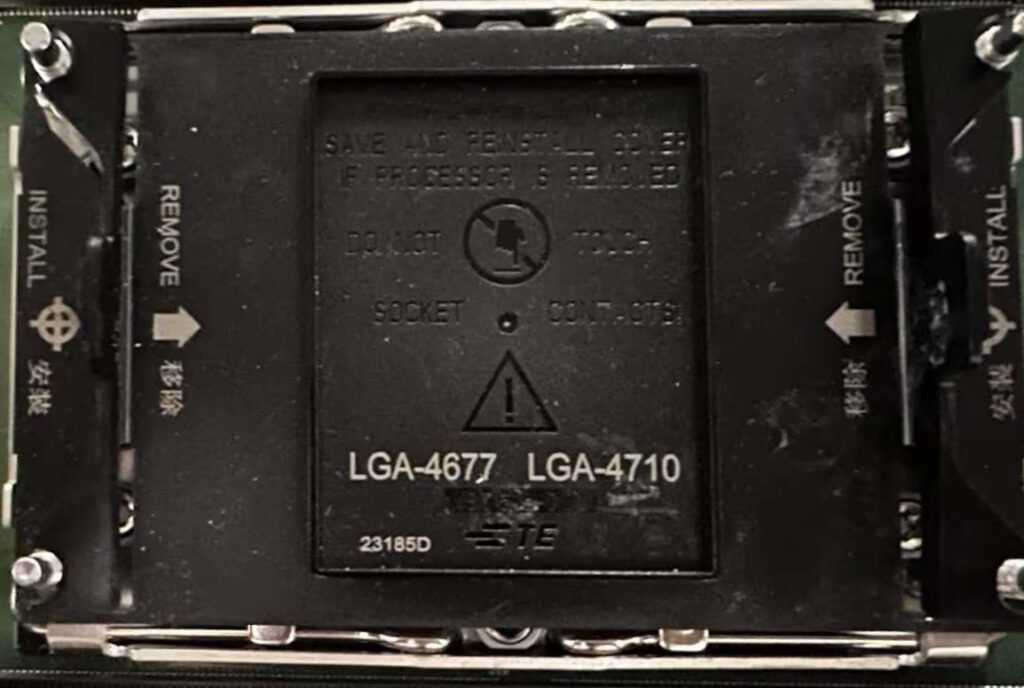LGA 4710 Review
Intel seems to be stirring the tech world once again with the emergence of the LGA 4710 socket. Recently, photos of this new processor socket were leaked online, sparking curiosity and speculation among tech enthusiasts and industry experts alike.
The LGA 4710 Enigma

At first glance, the LGA 4710 appears to be a new socket for server processors. Intel currently utilizes the LGA 4677 for its Xeon Scalable processors, with the next-generation Xeon Scalable set to employ the LGA 7529. The exact purpose of the LGA 4710, however, remains shrouded in mystery.
Speculations and Possibilities
There are theories suggesting that the LGA 4710, bearing resemblance to the current LGA 4677, might be an enhanced version of its predecessor. This enhancement could enable the implementation of additional technologies such as support for new versions of PCIe or CXL (Compute Express Link).
Beyond Traditional CPUs

An intriguing aspect of the LGA 4710 is the possibility that it may not be intended for traditional CPUs at all. Instead, this socket could be designed for different kinds of accelerators or even Field-Programmable Gate Arrays (FPGAs). FPGAs are particularly versatile in their ability to be reprogrammed to desired application or functionality requirements, a feature that could significantly benefit specialized computing tasks.
The Trend of Specialized Sockets
In the broader context of processor development, the emergence of specialized sockets like the LGA 4710 aligns with a growing trend. As computing demands diversify, there’s a mounting need for hardware that caters to specific tasks, be it in AI, data analytics, or cloud computing. Intel’s development of varied sockets and processors indicates an adaptation to these evolving technological needs.
Potential Impact on the Server Market
If the 4710 is indeed for server processors, it could signal Intel’s continued commitment to advancing server technology. The server market, especially with the rise of cloud computing and data centers, demands processors that can handle intense workloads efficiently. The LGA 4710 could be part of Intel’s strategy to stay competitive and innovative in this rapidly evolving sector.
While the exact role and capabilities of the LGA 4710 socket remain a topic of speculation, its introduction is a clear indicator of Intel’s ongoing innovation in processor technology. Whether it’s for enhanced server processors or for something as unique as FPGA integration, the LGA 4710 is a testament to the ever-evolving landscape of computing technology. As we await further details, one thing is certain: Intel continues to push the boundaries of what’s possible in the realm of high-performance computing.
The Intel LGA 4710 is a newly leaked processor socket type, speculated to be part of Intel’s next-generation server processor lineup. Here’s a comprehensive overview based on the information gathered from various sources:
- Potential Usage and Features: There is a possibility that the LGA 4710, given its similarity to the current LGA 4677, represents an enhanced version of the latter, potentially enabling additional technologies like support for a new version of PCIe or CXL. Additionally, the LGA 4710 might not be intended for traditional CPUs but could be designed for accelerators or even FPGA.
- Connection to Granite Rapids-SP: A recent photograph leak revealed the upcoming Intel Xeon processor known as Granite Rapids-SP, paired with the LGA 4710 socket type. This socket should not be confused with the Granite Rapids-AP CPU and its distinct LGA 7529 socket. The larger LGA-4710 socket will also be compatible with Intel’s future Efficient-core implementation, codenamed “Sierra Forest,” within the Xeon lineup.
- Consumer/Workstation Series Possibility: There is speculation that the smaller LGA-4170 socket might serve the consumer/workstation series, referred to as Xeon WS. However, this has not been officially confirmed. The existing workstation series, known as Sapphire Rapids-WS or Xeon W3400/2400 series, is expected to be updated early in the next year.
- Beechnut City Platform: The leak disclosed a connection between the LGA-4170 socket and a platform known as “Beechnut City,” which is compatible with GNR-SP CPUs. This dual-socket platform is specifically crafted for upcoming data-center processors based on the Granite Rapids-SP architecture. It supports up to 350W TDP SKUs and up to 8-channel DDR5 memory operating at a maximum speed of 6400 MT/s.
- Future Launch and Generations: Before launching Granite Rapids, Intel plans to introduce a 5th Gen Xeon platform, “Emerald Rapids,” using the same platform as the 4th Gen Xeon Sapphire Rapids. The sixth-generation Granite Rapids-SP & AP CPUs, based on the “Intel 3” process node, are expected to be released in the second half of 2024, following the Sierra Forest lineup.
In summary, the LGA 4710 socket is a part of Intel’s ongoing development in the server processor market, possibly offering enhanced capabilities and compatibility with future technologies. Its exact purpose and the processors it will support remain somewhat speculative, but its association with the upcoming Granite Rapids-SP and potential applications in server and data-center environments are clear.

